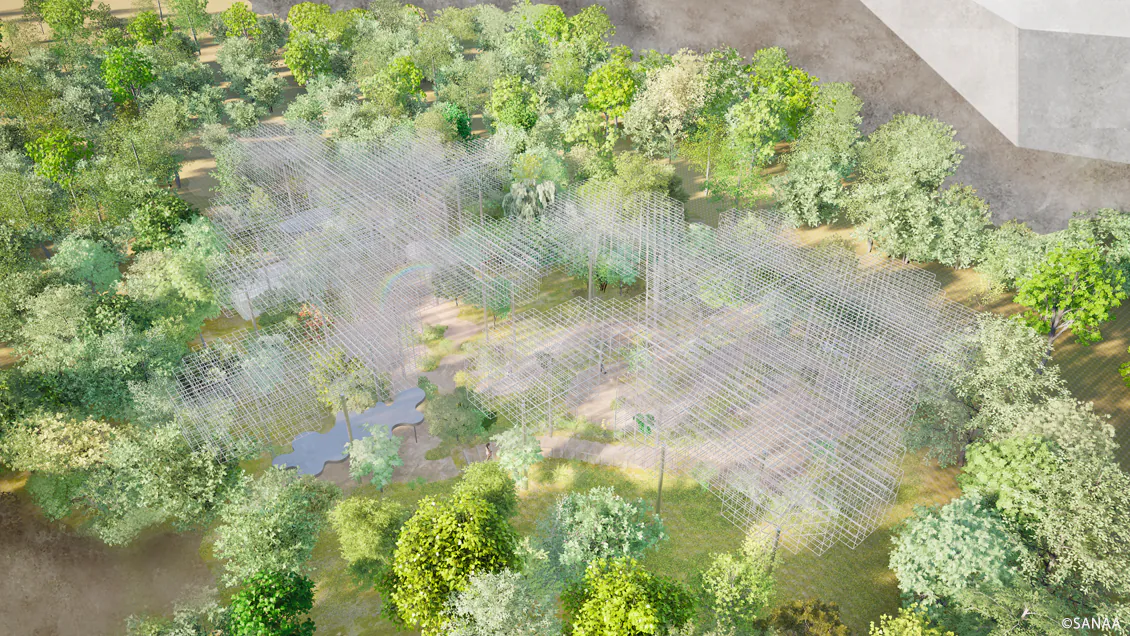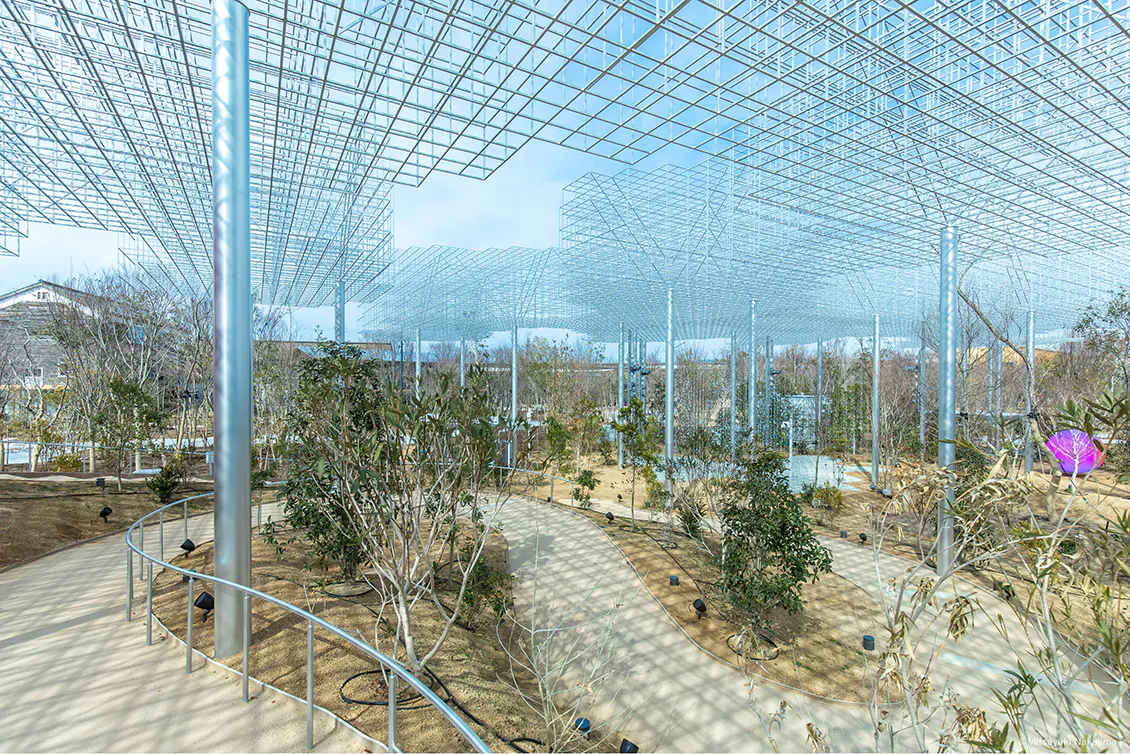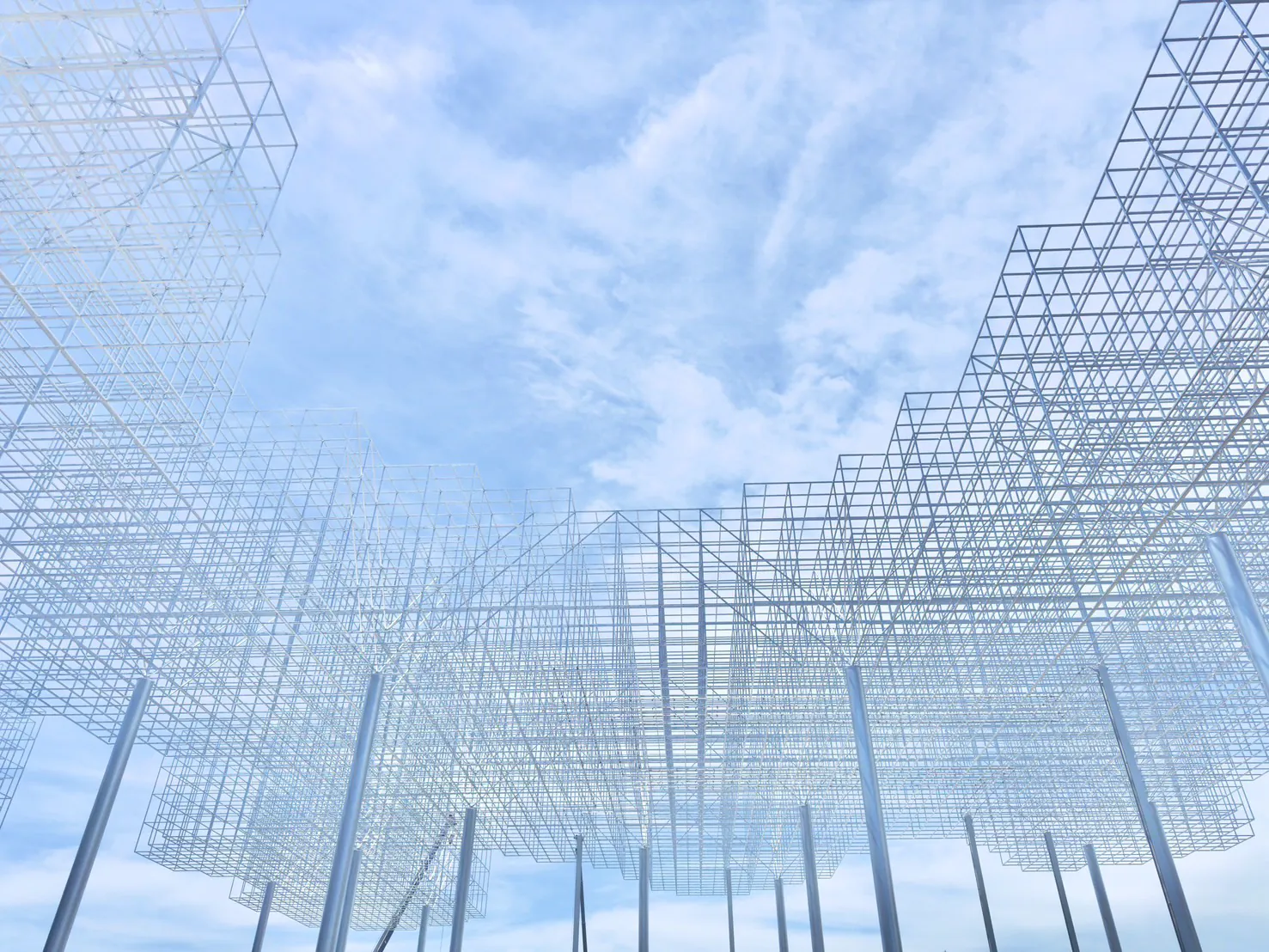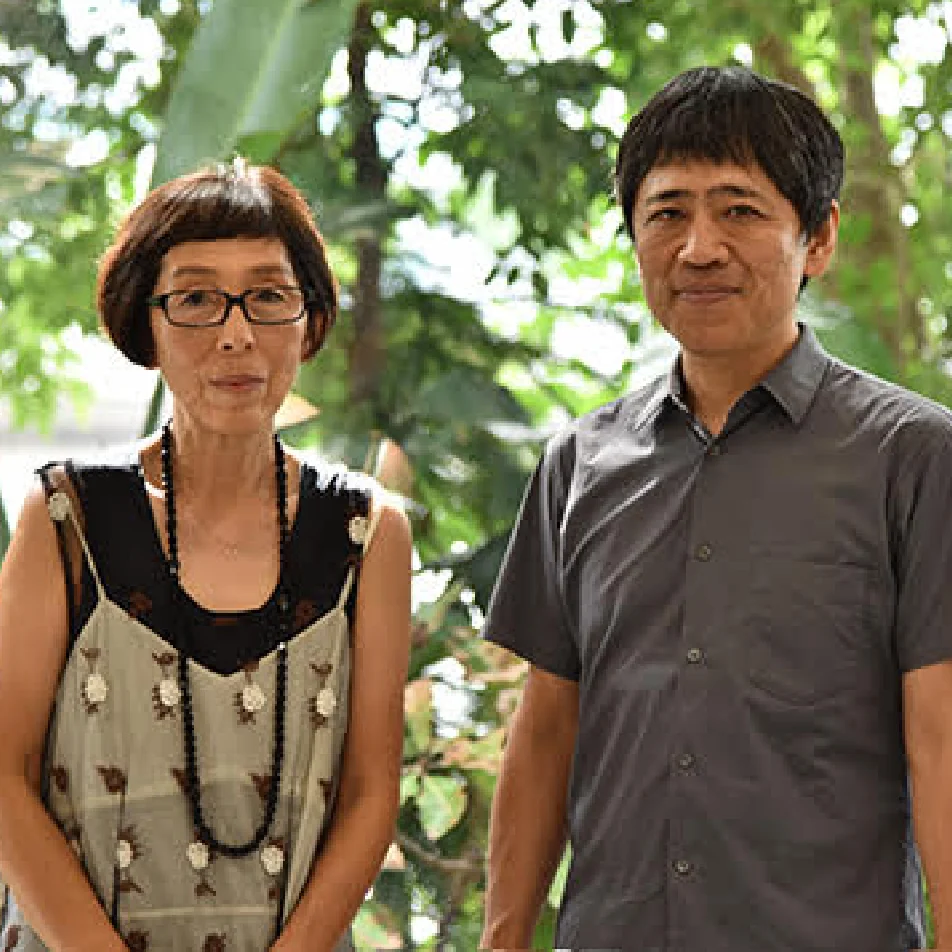
Modern World Expos were once emblematic of mass-production and mass-consumption societies; now, as that model approaches its limits, Expos bear a responsibility to present new visions. The “Grand Ring” at the Expo 2025 Osaka, Kansai, Japan is designed as a structure that gently envelopes people of many backgrounds, offering them the experience of gazing at a shared sky. That shared moment has the potential to foster shared empathy—both sorrow and joy—across diverse social and cultural contexts. By uniting people with one sky while respecting their differences, new possibilities for imagining the future may emerge. The essence of Co-Being lies not in forced uniformity but in sharing “the same sky” even as our individual perspectives remain distinct. This is a key part of what “Better Co-Being” contributes to the Expo 2025 Osaka, Kansai, Japan.


Designed by SANAA, the pavilion stands amid the forest, merging seamlessly with its surroundings. Rather than the usual walls or ceilings, the structure is composed of a four-layered, silver, grid-like canopy 11 meters high, supported only by slender columns. This canopy seems to float like a cloud, thanks to delicately engineered connections. It does not protect against wind or rain; rather, it embodies the ideals of the Better Co-Being Pavilion and serves as a stage for art-based experiences.
Architecture that shields people from nature or partitions spaces for specific purposes remains relevant in many contexts. Yet at the heart of the forest of tranquility, and in the experiences offered by both the forest and the Better Co-Being Pavilion, the focus is on open-ended connections. Here, architecture acts as a bridge between people and the world, expanding possibilities for the future.

When seen through the pavilion’s canopy, the sky reveals aspects unfamiliar in everyday life. Sunlight and clouds appear more dynamic, while subtle shifts in the sky’s color become more perceptible. On cloudy days, the canopy seems to blend with the overcast sky, and at night, it evokes a mystical sensation of floating in the cosmos. This simple act of “looking up at the sky together” echoes across several art installations in the Expo site, including those in the forest of tranquility. Under SANAA’s canopy, gazing upward becomes a core experience of “Better Co-Being,” in which we sense our shared future and walk forward together.

Sejima and Nishizawa were jointly awarded the Golden Lion at the 9th Venice Architecture Biennale in 2004. They both were awarded the Pritzker Prize in 2010.
SANAA’s major works include the 21st Century Museum of Contemporary Art, Kanazawa (Japan), the New Museum of Contemporary Art (USA), the Rolex Learning Center, EPFL (Switzerland), Louvre-Lens (France), Grace Farms (USA), Shogin TACT Tsuruoka (Japan), Hitachi City Hall (Japan), Bocconi University New Urban Campus (Italy), La Samaritaine (France), and Sydney Modern Project (Australia).
Sejima Kazuyo (b. 1956, Ibaraki, Japan) studied architecture at the Japan Women’s University. In 1987 she opened her own studio Kazuyo Sejima & Associates, and then in 1995, together with Ryue Nishizawa, she founded SANAA. She is currently a professor at the Polytechnic University of Milan, a visiting professor at Japan Women’s University and Osaka University of Arts, an Emeritus Professor at Yokohama National University, and Director of Tokyo Metropolitan Teien Art Museum.
Nishizawa Ryue (b. 1966, Tokyo, Japan) studied architecture at Yokohama National University. In 1995, he opened SANAA with Kazuyo Sejima, and in 1997 he founded the Office of Ryue Nishizawa. He is currently a professor at Yokohama Graduate School of Architecture (Y-GSA).

SANAA × Hiroaki Miyata
※This page is written in Japanese only.